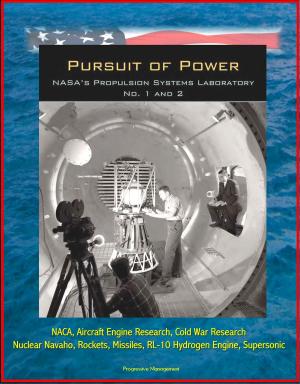The Air University Pantheon of Air, Space, and Cyberspace Power Thinkers: Wright Brothers, Billy Mitchell, Robert Goddard, Hap Arnold, Claire Chennault, Theodore von Karman, and Others
Nonfiction, Science & Nature, Technology, Aeronautics & Astronautics, History, Military, Aviation| Author: | Progressive Management | ISBN: | 9781310824517 |
| Publisher: | Progressive Management | Publication: | September 5, 2014 |
| Imprint: | Smashwords Edition | Language: | English |
| Author: | Progressive Management |
| ISBN: | 9781310824517 |
| Publisher: | Progressive Management |
| Publication: | September 5, 2014 |
| Imprint: | Smashwords Edition |
| Language: | English |
This compendium offers a broad sweep of some of our service's most remarkable and memorable figures in the context of an evolving center for airpower education. An initiative of Gen Steven R. Lorenz, former Air University (AU) commander, now commander of Air Education and Training Command, the Air University Pantheon of Air, Space, and Cyberspace Power Thinkers is an effort to identify the intellectual roots of Air University. By giving us a glimpse of the synergism of the exchange of progressive, nontraditional ideas among AU faculty and students, this pantheon helps us to realize how the application of these ideas have influenced airpower. In part because Air University serves as a forum for innovative thought and discussion, the United States continues to be the preeminent air, space, and cyberspace power.
The dawn of today's Air University was with the Army Air Corps Tactical School's (ACTS) move to Maxwell Field in early 1931. There the school served as a think tank for new ideas, including the development of airpower doctrine. Gen George Kenney became a supporter of both close air support and interdiction while teaching at the ACTS. Former ACTS instructors Hal George, Laurence Kuter, Ken Walker, and Haywood Hansell created the famous Air War Plans Division-1 strategy that became known as the "air plan that defeated Hitler." The progenitor to AU has since fostered generations of Airmen who would sustain AU's role as the Air Force's intellectual center.
Gen Henry H. "Hap" Arnold envisioned that as early as 1940, a future independent Air Force would need its own education system and insisted not only on high-caliber schools but also on a first-rate library and research center. In 1946 the Air Force officially dedicated Air University, fulfilling Arnold's dream.
Gen Muir S. Fairchild, AU's first commander, advanced the idea of academic freedom to provide an environment to encourage views which might be divergent from the norm.
Together, these biographies provide a framework for understanding the evolution of Air University and its powerful legacy in providing a forum for academic discourse, contributing to dramatic changes in the employment of airpower. Air University has been graced with individuals possessing imagination and keen intellect and the fortitude to bring their vision to reality. May their examples inspire a future generation to add its fresh ideas and unconventional viewpoints so that the Air Force can continue to preserve America's peace and security.
This compendium offers a broad sweep of some of our service's most remarkable and memorable figures in the context of an evolving center for airpower education. An initiative of Gen Steven R. Lorenz, former Air University (AU) commander, now commander of Air Education and Training Command, the Air University Pantheon of Air, Space, and Cyberspace Power Thinkers is an effort to identify the intellectual roots of Air University. By giving us a glimpse of the synergism of the exchange of progressive, nontraditional ideas among AU faculty and students, this pantheon helps us to realize how the application of these ideas have influenced airpower. In part because Air University serves as a forum for innovative thought and discussion, the United States continues to be the preeminent air, space, and cyberspace power.
The dawn of today's Air University was with the Army Air Corps Tactical School's (ACTS) move to Maxwell Field in early 1931. There the school served as a think tank for new ideas, including the development of airpower doctrine. Gen George Kenney became a supporter of both close air support and interdiction while teaching at the ACTS. Former ACTS instructors Hal George, Laurence Kuter, Ken Walker, and Haywood Hansell created the famous Air War Plans Division-1 strategy that became known as the "air plan that defeated Hitler." The progenitor to AU has since fostered generations of Airmen who would sustain AU's role as the Air Force's intellectual center.
Gen Henry H. "Hap" Arnold envisioned that as early as 1940, a future independent Air Force would need its own education system and insisted not only on high-caliber schools but also on a first-rate library and research center. In 1946 the Air Force officially dedicated Air University, fulfilling Arnold's dream.
Gen Muir S. Fairchild, AU's first commander, advanced the idea of academic freedom to provide an environment to encourage views which might be divergent from the norm.
Together, these biographies provide a framework for understanding the evolution of Air University and its powerful legacy in providing a forum for academic discourse, contributing to dramatic changes in the employment of airpower. Air University has been graced with individuals possessing imagination and keen intellect and the fortitude to bring their vision to reality. May their examples inspire a future generation to add its fresh ideas and unconventional viewpoints so that the Air Force can continue to preserve America's peace and security.















